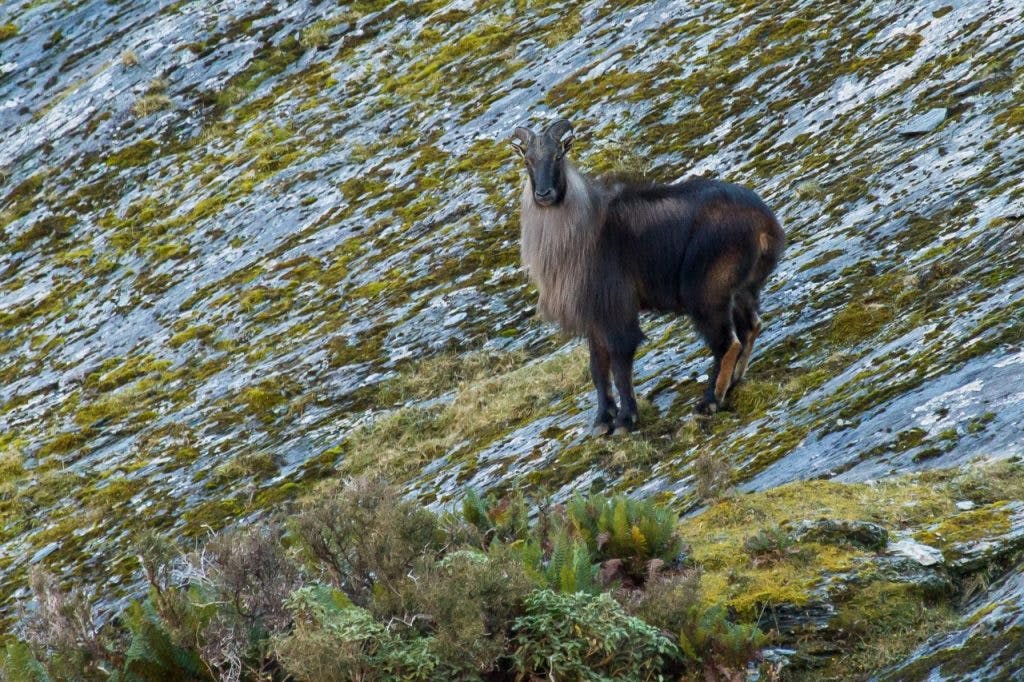The Conservation Authority has labelled DOC’s management of tahr a total failure and says the government may be forced to invest millions to reduce numbers due to years of neglect.
Himalayan tahr are meant to be kept to less than 10,000 animals under a control plan designed to prevent environmental damage, but the population is estimated to have reached more than 35,000.
Tahr have also been spreading into areas where DOC was meant to prevent them from establishing.
The authority, which advices DOC on conservation matters, sent a letter to the conservation minister in July calling for urgent action. It said Westland Tai Poutini National Park had become ‘a tahr game park’, with large herds of tahr. Without control, it estimated the population could grow by 5000 a year.
It blamed the growth on budget cuts and apathy.
‘DOC’s staff charged with hunting tahr have had their efforts capped by budget constraints and it seems that politicians have simply ignored the problem, hoping that it will go away,’ the authority said.
DOC spends $288,000 a year on tahr control, killing about 2800 animals a year, but the authority said it will cost millions to get numbers below 10,000.
DOC said it expected to make an announcement on tahr management next week and would not answer questions from Wilderness until then.
Game Animal Council councillor and Lincoln University environmental economics professor Geoffrey Kerr agreed that a lack of funding was the issue.
“The expectation was always that DOC would put money in to keep numbers down, but they didn’t put the resources in,” Kerr said. “DOC didn’t implement the plan.”
He said tahr hunting is still popular and hunters kill about 2000-3000 tahr a year, while more than 1000 were killed on guided trophy hunts – which was a $15m industry.
Kerr said New Zealand is the only country where tahr are found in significant numbers and are legal to hunt. International hunters pay $14,000 per trophy bull.
But tahr can be in very hard to access alpine areas, and DOC culls were required to control the population.
Kerr said estimating tahr numbers is notoriously difficult, and monitoring had found numbers could be as low as 17,000, or as high as 52,000.
Forest and Bird chief conservation advisor Kevin Hackwell said tahr are altering the ecology of alpine areas and DOC needs to put significant funds into bringing the numbers below 10,000.
“It’s clear that hunting by itself is not doing the job,” Hackwell said. “We need to see concerted management going on.”
Hackwell is hopeful DOC’s budget boost this year will mean more resources will be able to be put into tahr control.
Tahr are an introduced feral goat found in alpine areas of the Southern Alps and can devastate alpine plants, but they are a popular game animal with both local and international hunters.
Ironically, the tahr control plan was developed in 1993 due to fears tahr would be wiped out, as the species were hunted by helicopter for their meat for high-end restaurants. In the 1980s, the government put a 10 year moratorium on commercial tahr hunting, and developed the management plan in an attempt to balance hunting interest with conservation. Under the plan, tahr numbers were to be limited to 10,000 animals, above which it states they may cause significant environmental damage. If commercial and recreational hunting failed to control tahr numbers, DOC was meant to pay to cull animals.
The plan said tahr numbers ‘would not be permitted’ to increase beyond the limits set in the plan and this would help avoid ‘boom-bust fluctuations’ which are ‘intrinsically more difficult to manage’. But tahr numbers have increased and DOC has failed to control their expansion.
The Conservation Authority has suggested reviving the tahr meat market may be one way to boost control efforts.
‘Unless this occurs, the control of tahr will remain an ongoing drain on taxpayer funds. One danger of a restaurant trade is that it could encourage the retention of large accessible herds of tahr rather than their elimination.’
The authority has called for an immediate review of the Tahr Management Plan ‘to determine why the plan has been such a total failure’.







